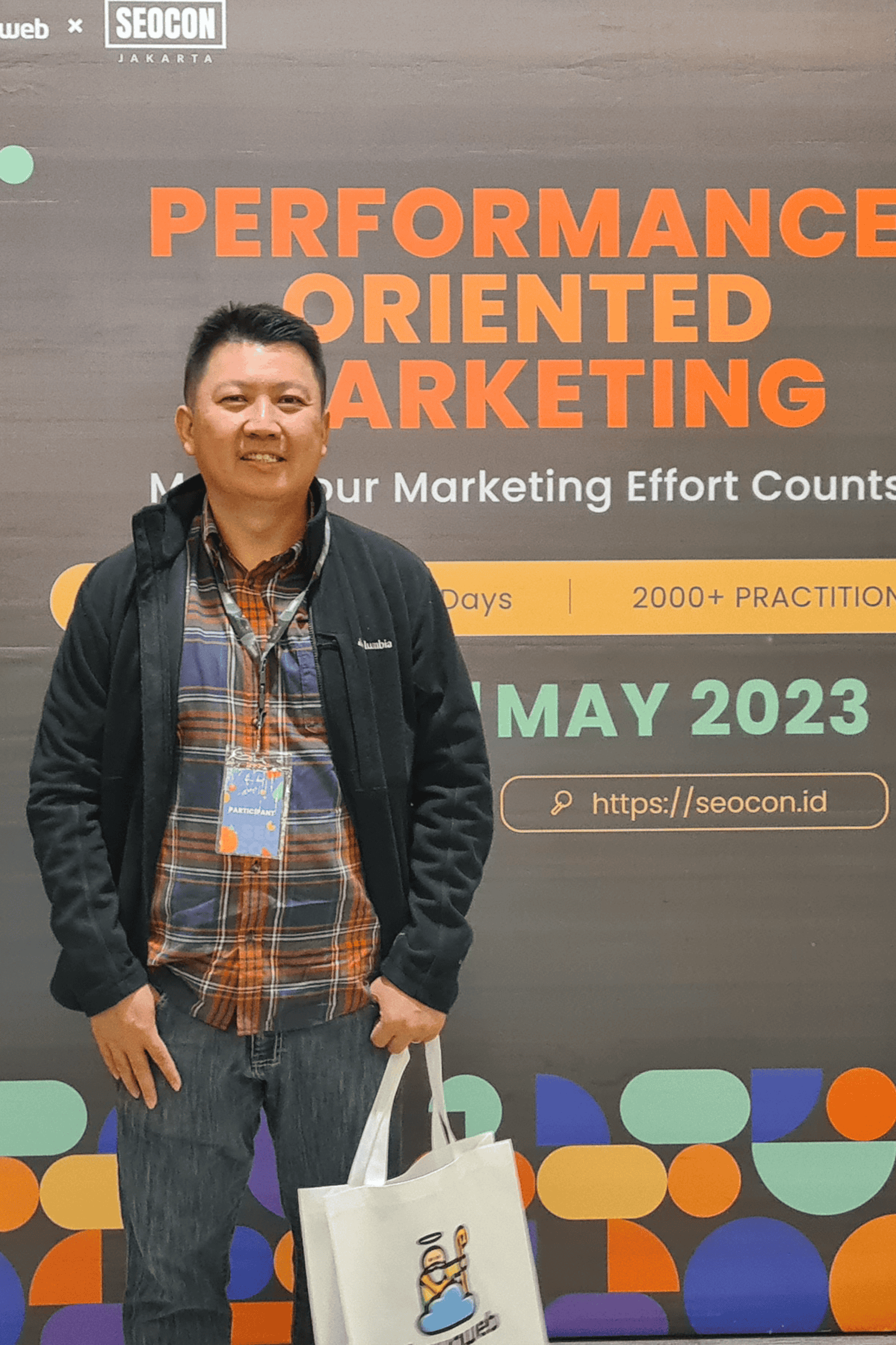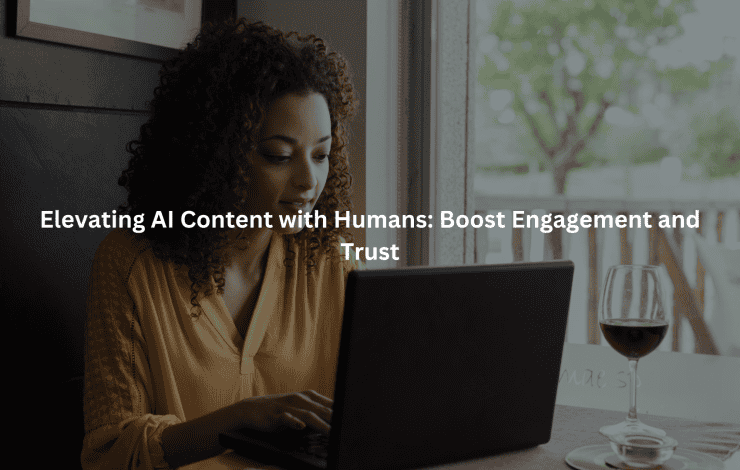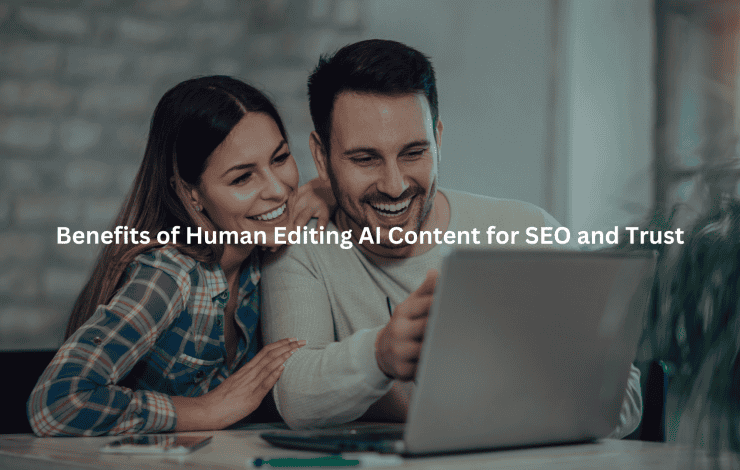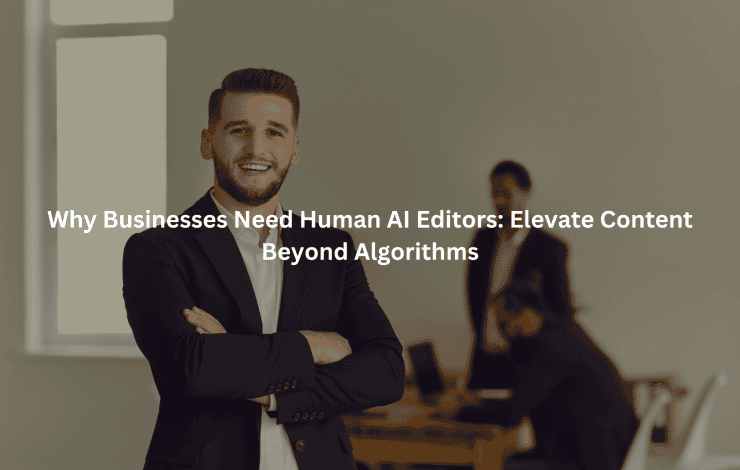Sometimes, it feels like everything online moves too fast for its own good. Still, when it comes to SEO content, a human editor, one who understands both the quirks of language and the demands of search engines, makes a real difference.
AI can spit out keywords and rough drafts in seconds, sure, but it’s the editor who checks facts, smooths out awkward phrases, and keeps the tone steady with the brand’s voice. That’s how you get content that actually feels right, not just something that checks boxes. It’s probably the only way to make sure your pages don’t just blend in.
Key Takeaway
- When people work alongside AI tools, the content usually comes out clearer, more accurate, and it sounds like the brand.
- Mixing smart keyword use with careful human checks tends to help pages rank better and makes readers trust what they’re seeing.
- Keeping an eye on how things are working and tweaking the process now and then might be the only way to stay ahead in crowded search results.
Human-AI Editing Workflow
Most mornings start the same, coffee cooling beside the keyboard, dashboard glowing with a list of content requests at Jet Digital Pro. Each one’s got its own brief, keyword, and a deadline that always feels closer than it should. The process isn’t some secret sauce, it’s just a mix of fast machines and people who aren’t afraid to poke holes in things. That’s why it works.
AI Content Generation
Draft Creation
AI handles the grunt work on first drafts. At Jet Digital Pro, it all kicks off with keyword research, sometimes more than 500 queries, yanked from Ahrefs or SEMrush. We lump them by topic, intent, and how tough they’ll be to rank for.
For one blog, the AI might drop in 15–20 main and related keywords, plus long-tail phrases the competition misses. It doesn’t get tired, just keeps clustering, checking SERPs, and writing based on what people are actually searching for. [1]
One client wanted a batch of SaaS SEO guides. The AI cranked out 5,000 words in about an hour, covering keyword research, intent mapping, title tags, the whole deal. It’s quick, and sometimes it spots patterns, like those oddball keywords from People Also Ask, that a person might skip over. Still, even when it nails the keywords, the draft always feels a bit lifeless.
Preliminary Keyword Integration
Before an editor even opens the doc, the AI’s already packed it with main and secondary keywords, internal links, and schema markup ideas. It tries to keep keyword density around 1.3% for primaries, half that for the rest.
It also takes a first shot at matching keyword clusters to headers and meta descriptions. Nothing fancy here, just math and repetition. Sometimes it nails the anchor text for links, sometimes it’s way off. That’s why we double-check.
Human Editorial Review
No AI draft ever makes it through untouched. Editors jump in, and that’s when things start to sound real.
Factual & Source Validation
There was a draft once where the AI said Google’s latest update penalized all guest posts. Not true. Editors checked Search Engine Journal and Google’s own docs, then fixed it. The job’s about hunting down every fact, chasing the latest info, and ditching anything that’s old news.
If the AI drops a stat from 2019, we go find something fresher. If it quotes a number (“SEO drives 1000%+ more traffic than organic social”), we track down the source. Sometimes editors add their own notes or pull in a quote from an expert.
Sources get checked, too. Technical pieces might get a Google patent or something from Backlinko. E-commerce stuff? Shopify or BigCommerce. That’s how you turn “sounds about right” into “actually right.” Every editor here works through the same checklist: fact-check, update, cite, repeat.
Tone, Voice, and Readability
Once the facts are straight, we adjust the tone. AI, for all its smarts, still writes like a robot. We rewrite sentences so they sound like us, not like a machine. We match the tone to the brand, whether it’s formal, conversational, or somewhere in between. We’ve seen drafts with three different voices in one paragraph, AI does that.
We care about clarity, too. If a sentence runs on, we chop it. If there’s jargon, we swap it for something clearer. Paragraphs too long? Break them up. Every piece should read naturally, like someone who knows what they’re talking about but isn’t trying to impress you. That’s how we keep people reading past the first 100 words.
SEO-Driven Content Optimization
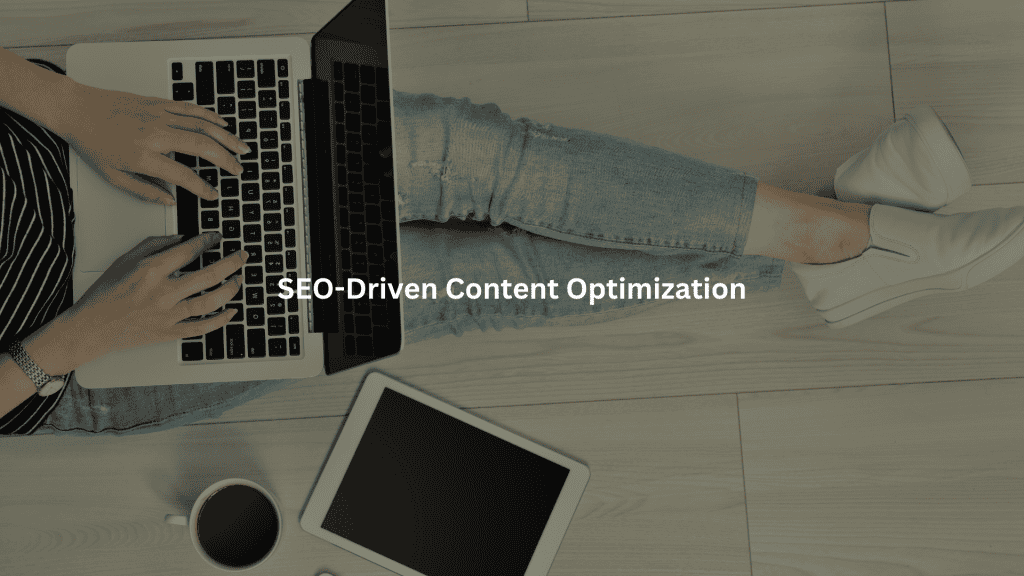
Getting the content right is only half the job. It’s got to rank. We make sure it does.
On-Page SEO Techniques
Structural Optimization
We structure everything with SEO in mind. Title tags come first, always under 60 characters, with the main keyword at the start. Headers use keyword clusters, H2s match primary queries, H3s handle variations. We use bullet points for lists (users love them, so does Google). Every blog, guide, or landing page gets internal links, at least 3 per 1,000 words, pointing to relevant resources.
Logical flow matters. We don’t bury the lede. Key info goes up top, supporting details follow. We use short paragraphs and clear transitions. If the topic’s dense, we add summary tables or FAQs. This is how we keep bounce rates low and dwell time high. [2]
Keyword Usage & Variations
We always check keyword density. Too low, and you’re invisible. Too high, and Google thinks you’re stuffing. We shoot for natural use: one main keyword per 100–150 words, synonyms sprinkled throughout. AI helps, but humans decide when a synonym fits or when a sentence needs to be reworked for relevance.
We also look at semantic keywords and related queries. For example, if we’re writing about “keyword research,” we’ll add clusters like “keyword planner,” “search intent,” “long-tail keywords,” and “SEO audit.” That helps pages rank for more queries. We avoid over-optimization, no one wants to read “SEO strategy” seven times in a paragraph.
SERP & Competitor Insights
Competitor Benchmarking
We always peek at the top-ranking pages. Our editors use tools to see what keywords competitors rank for, how they structure content, and where their gaps are. If the leader’s missing a key section, like SEMrush’s guide skipping over “content authority” or “anchor text”, we add it. We check their meta descriptions, see if they’re using schema, and note how many words their top pieces run. Sometimes the best way to stand out is to cover what the others skip.
Keyword Opportunity Analysis
We run keyword gap analyses using both AI and manual review. AI can pull hundreds of suggestions in seconds. We prioritize by difficulty, search volume, and intent. For instance, a keyword with a KD under 30 and 400+ monthly searches is gold if competitors ignore it. We map these gaps to content sections, then check that each piece hits as many as possible without feeling forced.
We also look for “search intent mismatches.” If the top ten results for a keyword are all product pages and the brief asks for a blog, we flag it for the client. This saves everyone time and increases the odds of ranking.
Quality Control Tools & Processes
We’ve tested dozens of tools over the years, some better than others. The right ones make a difference.
Co-Audit Tools Integration
Tool Selection & Workflow
For complex content, think tables, summaries, or code, we add co-audit tools. At Jet Digital Pro, we use a mix: Grammarly for grammar, Writer.com for style, SurferSEO for keyword scoring, and even custom scripts for table validation. Tools catch what we might miss, like a missing header or a duplicated keyword.
Editors run every draft through these tools before final review. We’ve built them into our workflow so nothing slips through. It’s not just about spelling errors. These tools flag inconsistencies, check for bias, and spot missed opportunities. We give editors a checklist: run the draft through the co-audit, fix what comes up, and only then send to QA.
Error Detection & Correction
Co-audit tools do more than flag typos. They highlight sentences that are too long, passive voice, or missing keywords. We use their recommendations but don’t blindly follow them. Sometimes a sentence works better without the keyword. Sometimes the tool gets it wrong. Human judgment still wins.
After tools, editors do a final sweep for compliance, does the content match the brief, follow the style guide, hit the keyword targets, and answer the main search intent? If not, we rework it. At Jet Digital Pro, our editors know that the software’s there to help, not replace, their judgment.
Consistency and Brand Integrity
Content Standardization
Consistency is non-negotiable. Every piece, whether it’s a blog, product description, or landing page, follows the same formatting, style, and tone. We keep our style guide updated, if Google changes its rules (like the Helpful Content Update), we update ours. Editors check every piece against the guide before sending it live.
We also use templates. Not because we’re lazy, but because they save time and reduce mistakes. A product review has the same structure every time, just like a how-to guide or a case study. This keeps things predictable for the client and the reader.
Internal Review Loop
Feedback is constant. We run editor performance checks every month, tracking things like error rates, on-time delivery, and keyword ranking improvements. If someone’s slipping, we catch it early. We also invite clients to send feedback, good or bad. This loop keeps our process sharp and helps us spot trends. If three clients mention tone issues, we fix it in the guide. If a tool’s not catching something, we look for a better one.
Advanced Strategies for Standout Content

Are You a Digital Agency?
White Label SEO Content Services for Agencies
Scalable, customizable, and results-driven content solutions for your clients.
Not every agency goes this far. We do, because agencies that partner with Jet Digital Pro expect more than just “good enough.”
Creativity & Contextual Sensitivity
Audience-Centric Adaptation
We adapt content for different industries and audiences. A B2B fintech guide needs a different tone than an e-commerce product roundup. We train editors to spot these differences. We also add original touches, personal experiences, real data, or a unique angle that AI alone can’t generate. For a recent health client, we included a story from a nurse about using telemedicine, which made the piece more relatable and trustworthy.
We don’t just swap industry terms. We dig into what matters to the audience. If we’re writing for lawyers, we focus on compliance and authority. For SaaS founders, we highlight growth tactics and KPIs. This keeps the content real, not generic.
Case Studies & Real-World Examples
We include before-and-after samples when we can. One client came to us with a 1,200-word AI draft on “keyword clustering.” It was technical, dry, and had zero engagement. Our editor rewrote it, added examples from three real businesses, and included a table mapping keywords to landing pages. The bounce rate dropped by 20%, and time on page doubled.
We also share success stories. In one campaign, we used AI to generate local SEO guides at scale. Editors added community insights and local stats. The client saw a 40% jump in organic traffic in three months. These aren’t outliers, they’re what happens when humans and AI work together.
Future-Proofing & Performance Tracking
Trend Analysis & Workflow Adaptation
We keep an eye on Google algorithm updates and changes in semantic search. When Google rolled out the Helpful Content Update, we updated our workflows within a week. We trained editors to focus on expertise, experience, authority, and trust (E-E-A-T). We also monitor trends in keyword difficulty and search intent. If “AI content assistant” starts to spike, we add it to our keyword lists and topic clusters.
We adapt our process as needed. If new tools or strategies work, we test and adopt them. We don’t wait for things to break before making changes. We look for chances to improve, even if it means reworking our templates or retraining our team.
Content Performance Measurement
We track everything. Keyword ranking, SERP visibility, engagement rates, and conversions. If a page slips in ranking, we run an audit. Maybe the intent changed, or a competitor added a new section. We update the content, resubmit to Google, and watch the results.
We also look at user engagement, scroll depth, time on page, CTR from search. These numbers tell us if people actually find the content useful or just bounce. If a piece underperforms, we dig in, figure out why, and fix it. No one gets sentimental about old drafts. We care about what works.
FAQ
How does a human AI editor ensure keyword research stays aligned with search intent?
When a human AI editor reviews content, they don’t just look at surface-level keyword usage. They evaluate whether the selected keywords actually match the user intent behind search queries. This means checking if long-tail keywords, keyword variations, and semantic keywords are being used in ways that naturally reflect what real users are looking for. It’s not just about keyword density but how keywords serve the overall content strategy.
Can a human AI editor help prevent keyword stuffing while improving SEO content strategy?
Need a Strategic SEO Content Partner?
Let’s craft SEO content that ranks, converts, and grows your brand.
Talk to UsYes, that’s one of their core tasks. Human AI editors scan for unnatural keyword density and remove repetitive SEO keywords that might trigger penalties in the Google algorithm. They use SEO best practices like keyword grouping, internal linking, and anchor text correction to improve SEO content without relying on keyword stuffing. This keeps SEO optimization balanced and content relevance strong.
Why is manual review better for keyword clustering and semantic keyword use?
AI tools can suggest keyword clusters, but a human AI editor understands the nuance behind language. They group related keywords based on real-world context, which helps improve content depth and structure. Through keyword analysis and SERP analysis, they can see how semantic keywords support natural language processing, resulting in more meaningful SEO copywriting that improves SEO ranking factors.
How does a human editor handle inconsistent meta descriptions and header tags?
A human AI editor checks meta description and header tags to ensure they’re aligned with the overall SEO content strategy. They revise inconsistent title tags and adjust header tags to include keyword synonyms and keyword variations. They also cross-check keyword planner data and keyword suggestions to make sure key search queries are reflected in the right sections of the content, boosting visibility and relevance.
What role does a human AI editor play in improving competitor analysis insights?
Human editors use competitor analysis results to identify keyword gap analysis opportunities that AI might overlook. They evaluate content authority and content optimization against top-ranking pages. This manual insight helps in adjusting SEO keywords list and tailoring anchor text, internal linking, and content structure in ways that match real-world search volume and keyword difficulty, without sacrificing quality or readability.
Conclusion
If you run a digital agency or manage high-volume content, don’t lean on AI alone. Let machines handle drafting, keyword research, and clustering, but always bring in human editors for clarity, accuracy, and tone.
At JetDigitalPro, we mix smart tech with an 11-step human editing process to deliver SEO content that ranks, builds trust, and actually gets read.
Want white-label content that works? Talk to our team and get started today.
References
- https://www.ibm.com/think/insights/ai-generated-content
- https://www.semrush.com/blog/on-page-seo/
Related Articles
- https://jetdigitalpro.com/benefits-of-human-editing-ai-content/
- https://jetdigitalpro.com/role-and-value-of-human-ai-content-editors/
- https://jetdigitalpro.com/ai-content-editor/
P.S – Whenever you’re ready,
we’re here to help elevate your SEO content.
Partner with us for strategic, scalable content that drives real organic growth.
Contact Us Now

